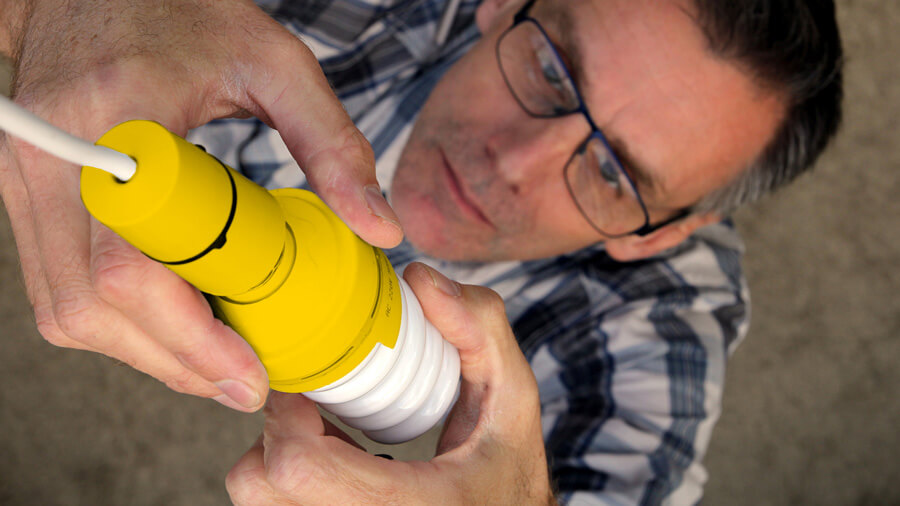January 10 marks National Cut Your Energy Costs Day, which encourages us to look for ways to reduce our energy use and save on monthly energy bills. A study by the Lawrence Livermore National Laboratory found that over 66% of our nation’s energy was wasted in 2016 through activities like leaving cars idling and leaving the lights on.
Even though many of us don’t think about our energy use, there is a cost to pay — both environmentally and financially. Here are 10 ways that you can reduce your energy.
Destroy the zombie appliances (or at least unplug them)
No, this isn’t a horror movie. Zombie appliances are gadgets that suck up energy when they’re not being used. Some examples are cable TV boxes, computers, DVD players, and phone chargers. Even if you turn the power off, these devices continue to feed on electricity and add to your energy bills. One easy solution is to use a power strip, where one button shuts off all the appliances connected to the strip, so you can switch multiple appliances off or even unplug the strip to be sure no zombies are feeding overnight.
Shut off the lights when you leave the room
Remember when your parents used to yell at you to turn off the lights when you weren’t using them? It turns out they were right. Unused lights are one of the largest wasters of energy for consumers and a major reason why your energy bills are so high. Some of us have subscribed to the myth that it takes more energy to turn on a light than it does to keep them on, which has been repeatedly disproven, so get in the habit of shutting off the lights in 2018. Your wallet will thank you.
Replace your light bulbs with LEDs
Incandescent bulbs, like the ones we grew up with, have become a thing of the past due to their inefficient energy usage. Now, you have a choice between compact fluorescent (CFL) or light emitting diode (LED) bulbs. While LEDs are more expensive upfront, they last around 50,000 hours, or about 10 years, before they need to be replaced. In comparison, CFL bulbs last only 20,000 hours, less than half the LED life. LED bulbs also save you between 45% and 65% in energy costs. You won’t see the savings right away but they’re sure to add up over time.
Use smart chargers for your phone
Many of us charge our phone overnight so it’s fully powered up by morning. The problem is that most chargers continue to use energy for hours after the phone is fully charged. Smart chargers are designed to stop charging once your phone’s power is full. The best part is that the technology has increased so fast in recent years that a smart charger doesn’t cost much more than a traditional charger. And with less energy usage, you’ll make back the extra cost within a few months.
Change your HVAC filters
Lots of energy gets wasted through inefficient systems such as blocked passages. One major source of waste is our heating and air conditioning systems. HVAC experts recommend that you change your filters once a month to make sure you’re getting full efficiency out of your system. Filters are cheap and easy to change, so it won’t cost you much in terms of time or money.
Keep the fridge full
Everybody loves the sight of a full fridge, but did you know it can save you money? When food is packed together, it serves to insulate the cooling going on in your fridge. When there’s more open space, it takes more energy to cool the inside of the appliance, leading to loads of wasted energy. Now you have a good excuse to go wild at the grocery store.
Line dry your laundry
Sure, this one takes time. But if you’re living in Arizona, where there’s no shortage of sun, it might be worth taking advantage of the weather and drying your clothes outside. You may even find line-drying to be a meditative experience.
Lower the temperature on your water heater
Water heating can account for about 12% of your energy bills, the largest expense after heat and air conditioning. Most water heaters are set to a higher temperature than necessary, with many pre-set at 140 degrees. This results in the waste of $36 to $61 per year, according to the U.S. Energy Department. They recommend households lower their water temperature to 120 degrees to avoid scalding and to save energy. For every 10 degrees you turn down the temperature, you can save 3% to 5% on your monthly bills.
You can accomplish all of these energy saving actions quickly and without spending too much money. Any additional costs are quickly recouped when your energy bills drop, so think of it as a good investment. Not only will you save money, but you will also be able to breathe easier knowing that you took steps to be a more responsible energy consumer.

